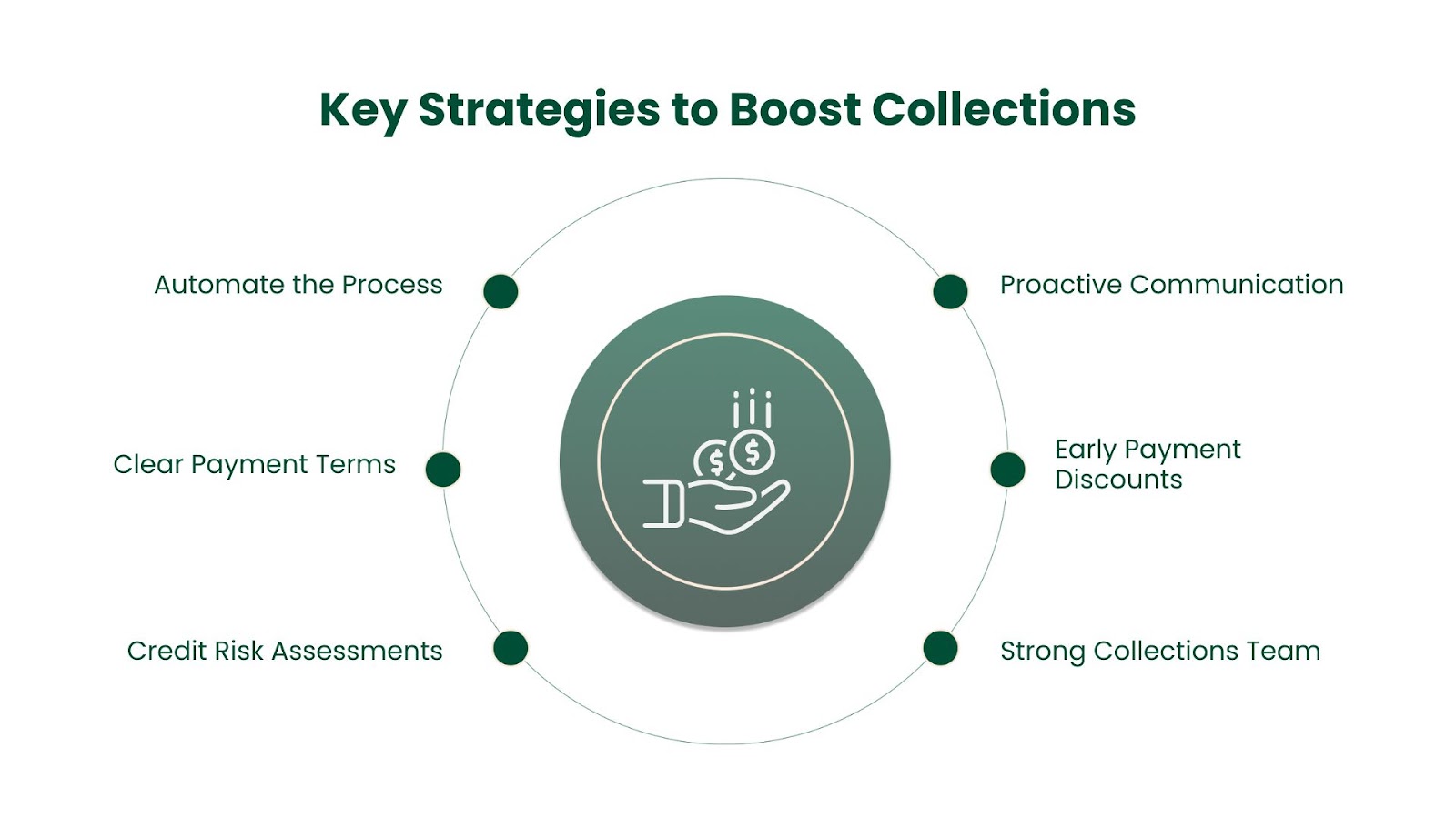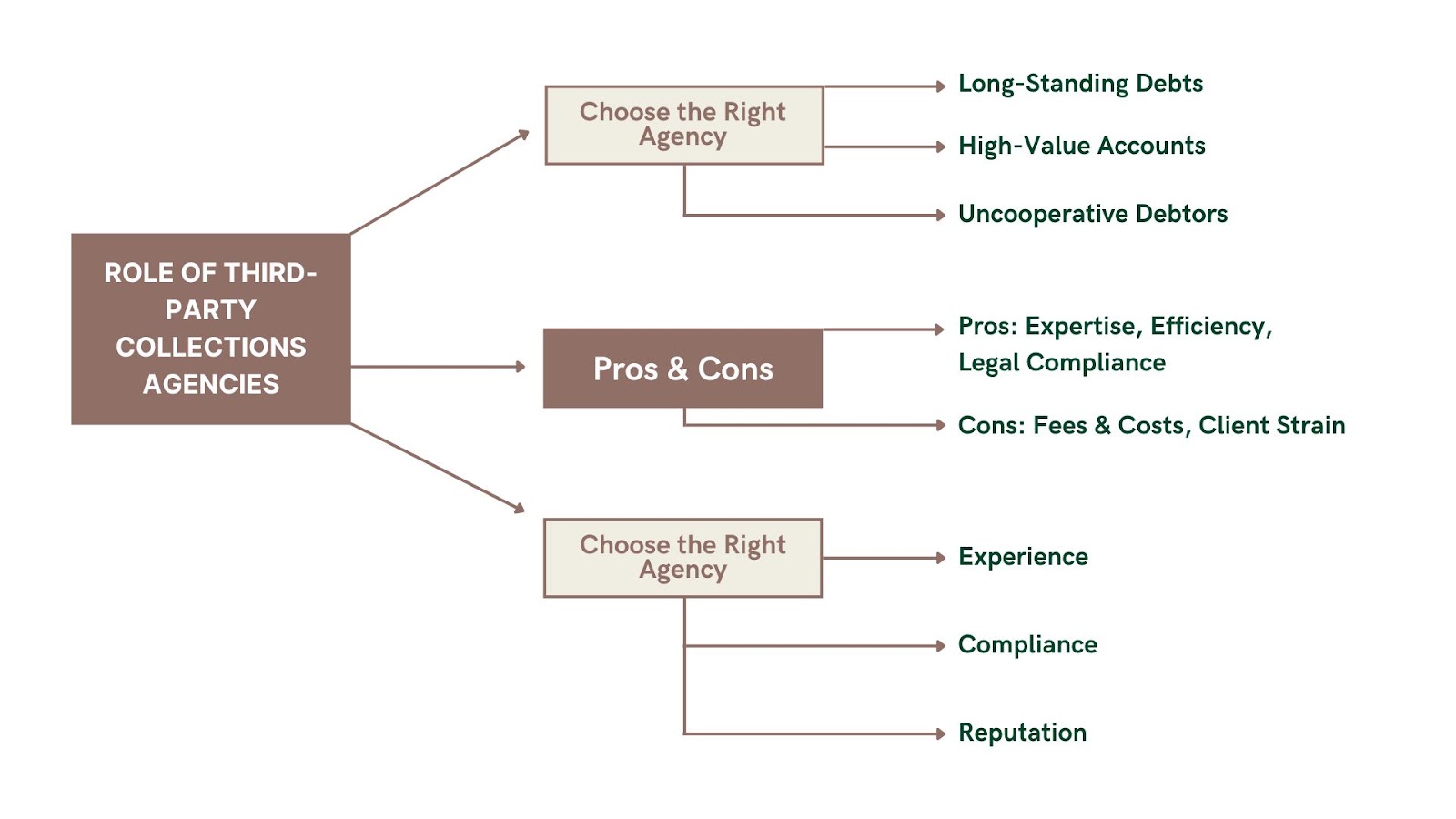
Shepherd Outsourcing opened its doors in 2021, and has been providing great services to the ARM industry ever since.
About
Address
©2024 by Shepherd Outsourcing.
Effective collection efforts are essential for maintaining business cash flow. 60% of small and medium-sized businesses (SMBs) struggle with cash flow management, often due to delayed payments. This financial bottleneck, stemming from outdated processes and slow manual systems, threatens the stability and growth potential of SMBs.
In this blog, we’ll explore actionable strategies to improve your collection cycle, including automation, clear payment terms, credit risk assessments, and more. Whether you're struggling with slow payments or looking to streamline your process, this guide offers practical solutions that can help improve cash flow and reduce overdue accounts.
The collection cycle is the time it takes for a company to collect payments for its goods or services, from the initial sale to the receipt of payment. It is a critical aspect of managing cash flow and working capital. In simple terms, the collection cycle represents the period between when a company issues an invoice and when payment is received.
Understanding key terms in the collections cycle helps businesses identify areas where they can improve cash flow management and streamline their processes.
By keeping a close eye on these key terms and their respective metrics, businesses can take proactive steps to improve their collection efforts.
Optimizing collection efforts directly impacts a company’s cash flow, operational efficiency, and overall profitability. Optimizing the collection process ensures that businesses receive timely payments, which helps maintain liquidity, fund daily operations, and invest in growth opportunities.
A slow collection cycle introduces several risks:
Now that we understand the importance of the collection cycle and the impact on cash flow, let’s explore some key strategies that can significantly improve your collection efforts.
Must Read: Effective Strategies for Business Debt Recovery

Automated systems help with invoicing, sending payment reminders, and following up with customers, ensuring that no steps are overlooked. By automating routine tasks, you reduce human error and free up your team's time to focus on more complex issues, such as negotiating with difficult debtors or managing exceptions. Automation also provides a more consistent, professional, and timely approach to collections, which can result in faster payments and fewer overdue accounts.
Make sure that clients understand the payment schedule, late fees, and any other important conditions. These terms should be communicated effectively in contracts, invoices, and reminders. By enforcing these terms consistently, businesses can prevent misunderstandings and ensure that clients are aware of their responsibilities. This clarity helps clients prioritize payments and reduces the likelihood of delayed collections.
By evaluating a client’s financial standing and payment history, you can set appropriate credit limits that match their ability to pay. Regularly updating these profiles helps ensure that you adjust limits as necessary, minimizing the risk of default. A well-managed credit assessment process allows businesses to identify high-risk clients early and take preemptive actions to avoid complications down the line.
By staying in regular contact with clients throughout the collection process, you can prevent delays and misunderstandings. Sending timely reminders before payments are due, being firm but polite, and using multiple communication channels such as phone calls, emails, and text messages ensures that clients are aware of their obligations. This consistency in communication can encourage timely payments and reduce the need for aggressive collection tactics.
A small discount (e.g., 2-5%) can significantly improve liquidity and reduce the number of overdue accounts. This strategy can help businesses collect payments faster and minimize the need for more aggressive collection efforts, which can often strain client relationships.
It’s essential to ensure your team is equipped with the right skills to handle difficult conversations, negotiate effectively, and maintain professionalism. Regular training sessions on customer relations, negotiation tactics, and legal compliance will prepare your team to address collection issues tactfully and effectively, increasing the chances of securing payment while keeping customer relationships intact.
At Shepherd Outsourcing Collections, we understand the importance of a dedicated team and tailored collection strategies. Our team is equipped with the knowledge and tools to optimize collection efforts while ensuring compliance and respecting customer relationships..
As we’ve seen, implementing effective strategies is crucial, but it’s just as important to monitor and measure the success of your collection efforts. Let’s explore how to track the effectiveness of your collection process to ensure continuous improvement.
Also Read: Successful Debt and Data Collection Techniques and Methods
Data analytics plays a vital role in improving collection efforts by providing insights into payment trends and debtor behaviors. Through the use of data tools, businesses can gain a deeper understanding of collection patterns and predict future collection challenges. Key applications of data analytics in collection efforts include:
Shepherd Outsourcing Collections is committed to improving your collection efforts by offering advanced data tools and strategies tailored to your business. Their team uses state-of-the-art skip tracing, reporting, and analytics tools to ensure that all collection processes are not only compliant but also optimized for faster payments.
If you’re looking to fine-tune your collection processes and improve cash flow, contact Shepherd Outsourcing Collections today.
Now that we’ve covered the key metrics and data tools to improve your collection efforts, let’s explore how third-party collections agencies can play a crucial role in optimizing recovery processes.
Further Read: Best Tips for Collection Agents to Improve Recovery

When collection efforts become stagnant or overly complex, involving a third-party collections agency can be a strategic solution. These agencies specialize in recovering outstanding debts and can significantly improve the chances of getting paid, especially when internal efforts fall short.
However, using a third-party collections agency requires careful consideration of when and how to involve them in your debt recovery process.
There are several situations where it may be necessary to bring in a third-party collections agency:
Collection agencies bring expertise, efficiency, and legal knowledge to the table. They specialize in handling difficult cases, improving the likelihood of recovering hard-to-collect debts. Their familiarity with the Fair Debt Collection Practices Act (FDCPA) ensures compliance, minimizing legal risks for your business and speeding up the collection process.
However, the cost can be significant, as agencies typically charge a fee based on a percentage of the recovered debt, which may reduce the overall amount you receive. Additionally, involving a third-party agency can strain client relationships, particularly if the process isn't managed carefully or if communication isn't handled properly.
Choosing the right collection agency is crucial for optimizing collection efforts while protecting your business's reputation. Consider the following when selecting an agency:
Shepherd Outsourcing Collections offers expert third-party collections services that prioritize compliance, customer relationships, and effective recovery strategies. With a focus on treating debtors respectfully while delivering results, Shepherd Outsourcing can help businesses navigate their most challenging collection efforts with ease.
Now that we’ve explored how third-party agencies can support your collection efforts, let's look at the technology solutions and tools that can streamline the entire collection process.
Further Read: Strategies to Improve Your Accounts Receivable Collection Process
By integrating modern tools into your accounts receivable (AR) process, businesses can automate key functions, reduce errors, and speed up collections, ultimately improving cash flow and operational efficiency.
One of the most effective ways to optimize collection efforts is by automating key AR processes. Automation tools streamline tasks like invoicing, payment reminders, and follow-ups, ensuring that no steps are missed.
These tools significantly reduce administrative costs, minimize human error, and accelerate the collection process by automating many time-consuming tasks.
Offering clients a variety of digital payment options is an effective way to simplify the payment process and improve collection efforts. By integrating payment portals and digital payment systems, businesses can provide a seamless experience for clients, making it easier for them to pay on time.
These payment solutions not only make paying more convenient for clients but also help businesses improve their collection efforts by making the payment process easier, faster, and more secure.
To wrap up, effective collection efforts are crucial for a business’s financial health. By optimizing your collection cycle with the right tools and strategies, such as automating invoicing and offering early payment incentives, you can improve cash flow and reduce risks associated with overdue payments.
Shepherd Outsourcing Collections is dedicated to helping businesses optimize their collection efforts. With our expert team and advanced collection strategies, we ensure timely payments and provide your business with the support needed to focus on growth while we handle the collections.
Want to make your collection efforts more efficient? Reach out to Shepherd Outsourcing Collections now to get started.